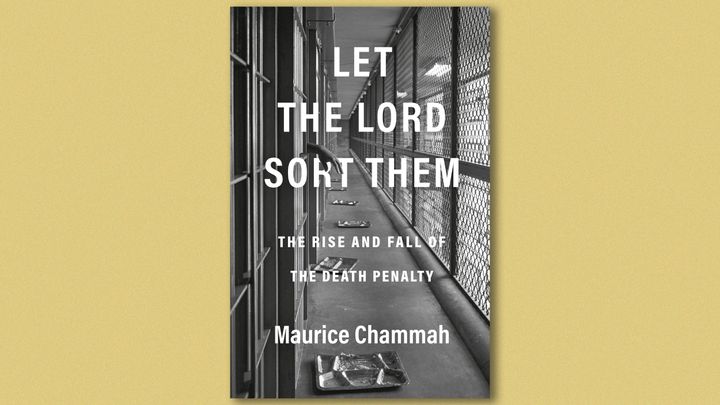
One of the strange byproducts of the coronavirus pandemic is the effect it has had on capital punishment in the United States. In 2020, as COVID-19 tore through the nation claiming hundreds of thousands of lives, there were only 17 executions, the lowest number since 1991. Ten of them were conducted by the federal government. Only two states ― Texas and Missouri ― executed anyone once the pandemic began.
As a result, the U.S. has now gone more than 230 days ― the longest period in 40 years ― without any state carrying out an execution. It is fitting that Texas, which has long led the country in the number of executions, aims to break the states’ streak next week with the planned execution of Ramiro Ibarra.
In 1972, the Supreme Court ruled that the death penalty in practice was arbitrary and capricious, which resulted in a moratorium on executions until 1976 as states rewrote their capital punishment laws. Texas restarted executions in 1982 and fast gained the dubious distinction of being the death penalty capital of the U.S. In the years since, it has killed 570 people on death row, more than a third of the country’s total number of executions.
Any complete history of capital punishment in the U.S. must look at Texas, and that is what Maurice Chammah ― a staff writer at The Marshall Project, a nonprofit news outlet focused on criminal justice issues ― does in his new book, “Let the Lord Sort Them: The Rise and Fall of the Death Penalty.” Meticulously detailed and carefully reported, the book examines how the U.S. came to embrace and then reject capital punishment. It tells the story of the death penalty through the eyes of those touched by it: the lawyers, family members, executioners, chaplains and death row prisoners themselves.
HuffPost spoke to Chammah recently about his work. The interview has been edited for length and clarity.
How did you decide to write a book on this topic?
The backstory is that before I was even a journalist, I got interested in the death penalty. My first job after college was at a nonprofit in Austin called the Texas After Violence Project. It was a small research outfit that was collecting oral histories around the death penalty. I spent a year driving all throughout Texas and doing these interviews with family members of murder victims, family members of people who have been executed, prosecutors. I thought there’s such a wealth of legal history here.
Fast forward a couple years and I realized journalism is the path that I wanted to be on. Over the course of my journalism career, I kept coming back to death penalty cases, and eventually around 2015 I realized that I had developed enough knowledge that I could wrap it together into a book. I was also inspired by reading a handful of key nonfiction books that try to get at big complex historical events through these very intimate glances at people’s lives, like Isabel Wilkerson’s “The Warmth of Other Suns.”
I’ve noticed in my own reporting that most people have really strong feelings about the death penalty that stem from their upbringing and their moral beliefs. When you began this work, did you have a strong position on capital punishment?
No, actually. I had grown up with a certain amount of discomfort at the fact that the state I lived in [Texas] was the epicenter of executions. But I had not, as a kid, thought a bunch about it.
When I was younger, the dominant cultural understanding of the death penalty was [as follows]: Whether or not there are problematic cases here and there, really bad crimes are committed by really evil people and those evil people deserve the harshest punishment possible. That was pretty common and it’s still common in certain circles in the U.S. But I’ve watched that change over the course of my own journalistic career.

One thing I really admired in the book is the empathy present in your reporting. You flesh out characters on both sides of the debate with nuance and understanding. Was that something that you were thinking about in designing how the book was going to be told?
I didn’t want anyone in the book to come off as evil because that has just not been my experience of the world. I had met plenty of prisoners who had committed terrible crimes and they didn’t seem like bad people when I was interacting with them. I also had interviewed plenty of prosecutors who had been accused of nefarious things like hiding evidence, but who believed themselves to be trying to do the right thing.
There were plenty of times during reporting and writing that I had a tendency or a desire to caricature people. The reason I ended up not doing that is partially because the people I interviewed trained me out of it. I’m thinking specifically of Danalynn [a defense attorney who plays a central role in the book]. She was defending people who committed crimes but that had trained her into seeing every kind of person ― even people on the other side of the courtroom ― with a certain amount of empathy. She then was carrying that into just all of her daily interactions, including with this reporter. I would ask questions that suggested a kind of caricature and she herself would say, well, that’s not really fair.
I’m wondering what you make of the waxing and waning media coverage of the death penalty. I moved to the U.S. in 1998 and there was a lot of attention paid to it at the time because of George W. Bush’s history in Texas. Why has the attention shifted over time?
That’s a really good question and there’s no one answer, obviously, because the vagaries of media coverage and public attention are really hard to define. But through the ’80s and ’90s, there was a series of high-profile cases and the way that executions got covered tended to be primarily about evil people getting their justice. I think of the ’70s through the ’90s as the heyday of the coverage of serial killers and some high-profile executions of fairly famous mass murderers. At the end of the ’90s, it’s really a coincidence of history that the governor from the most executing state runs for president and there’s a political interest in focusing on Texas and the death penalty. George Bush’s execution record was kind of an oddity on the national stage and so it attracted a lot of reporters.
It reached this fever pitch where he is running for president and the country is peaking on executions. I think that there was a moment at the peak of the death penalty when there was a real appetite for questioning the sort of dominant narrative of capital punishment.
And then we have 9/11. It’s an event that’s very hard to figure into the history because it is complex, but I’ve had some lawyers say to me that they feel like after 9/11, the dominant sense in American culture of who was a villain shifted from serial killers and death row prisoners to al Qaeda members and terrorists.
After that point, you see the death penalty pop up into the public sphere in a huge way only when there’s a really compelling innocent case. The death penalty cases that dominate public attention between 2001 and the present include Troy Davis, Cameron Todd Willingham, Rodney Reed. There’s this tendency for the one-off cases to gather all the attention.
The Trump executions shifted it yet again, from these one-off cases to a sense that this is a system and there’s systemic issues here that we need to address. It was fascinating to me to watch press coverage of the Trump executions because it felt like such a seismic shift away from the way that the death penalty was discussed in the media in the ’90s and early 2000s.
What are you hoping to achieve with this book?
I hope that readers come away feeling a real sense of ownership of the criminal justice system and its harsh tendencies that we all came to accept as a country 20, 30 years ago. Now, on the left and even on the right, there’s a lot of discomfort with some of the exaggerated qualities of our criminal justice system, the really harsh punishments, the overstuffed, multitudinous prisons. It can be easy to blame the past for that. I want people to have a sense of like this is our system and we are all culpable for building it and we’re also all culpable for the future. There’s a tendency in public policy to lay the blame on someone else. I wanted the book to give readers a real sense that they’re part of the system too, even if they have never thought much about the death penalty or criminal justice.
